Substrate is the material put on the floor surface. Substrate may also be referred to as bedding. Substrate for a bearded dragon can be either solid or loose.
Choosing the right substrate directly impacts the health and enrichment of your bearded dragon. Impaction, disease and other things that can go wrong are avoidable if you know how to make the right choice with your bearded dragons bedding.
Wild bearded dragons make use of all their habitat including sand, rocks, fallen branches, trees, grasses and even man made objects like fence posts and the roads. In the right sized environment, such a range of substrate and accessories is easy to provide and reduces the risks of any single substrate.
5 Low Maintenance, Cost Efficient Substrate for Bearded Dragons
1. Tiles and Slate Tiles
Summary and benefits: Tiles for bearded dragons, including slate tiles, are the absolute best all round floor surface. Easily cleaned and disinfected, eaten off and given water on, and can look aesthetically pleasing to us. Tiles can also be used as a base for other substrates and bedding such as artificial turf. This ensures a floor surface is always present or it can be used as the floor surface itself.
When setting up the tiles for your bearded dragon house, ensure the gaps between tiles are sealed off with silicone. This will prevent water seeping underneath and insects from taking refuge in gaps.
Tiles also make for a perfect flooring in quarantine enclosures and where illness has struck and cleaning needs to be at its peak. On the other hand, because tiles can be cleaned so effectively, it helps to prevent illness.
Cons: A drawback of tiles for bearded dragons is that their claws slip on the surface. There is little to no grip. However, when mixed with other substrates such as bedding substrate liners this is no longer a problem.
2. Lino
Summary and benefits: Lino for bearded dragons is much the same as tiles, however it should not go near any heated lamps.
Cons: As with tiles it does not provide grip for claws and is remedied the same way.
3. Artificial Grass
Summary and benefits: Artificial grass is great for bearded dragon floors. Combined with tiles underneath it keeps your options open and gives variation for your bearded dragons substrate.
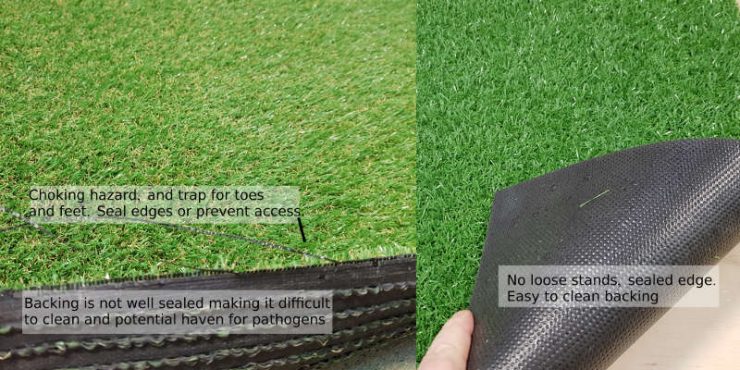
Easily kept clean the artificial grass can simply be taken outside to hose down and then popped in a bucket of disinfectant solution to finish off.
Keep multiple pieces of artificial turf to easily switch out at cleaning time. It will smell if not kept clean.
Cons: Artificial grass can get very hot to touch if too close to heating.
Replace it if it becomes brittle over time or strands become loose. Purchase artificial turf with a solid backing. Loose strands can trap toes and legs or become a choking hazard.
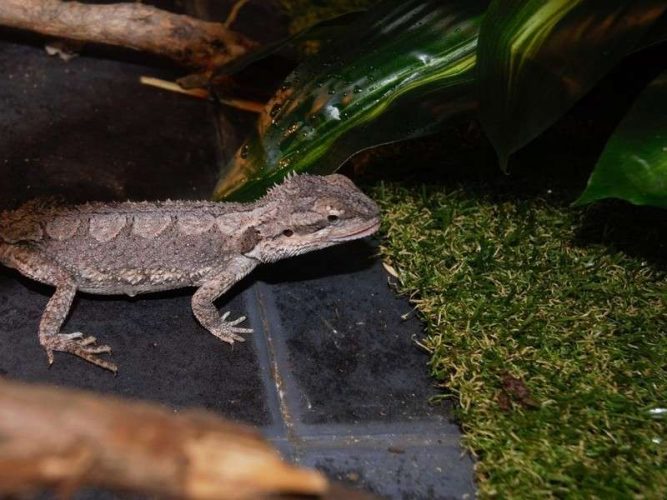
4. Paper, Paper Towels and Newspaper
Summary and benefits: Newspaper and butchers paper can be used as flooring.
The benefits really only extend to humans in reducing some of the cleaning required as paper can be picked up and replaced. Paper is great for bearded dragon substrate and bedding when illness has struck and the environment needs to cleaned more than once a day, such as with coccidia.
Paper can be torn up into shreds to provide more ways to interact with it.
Cons: Paper bedding does not provide any grip for claws if left hole. Feeder insects will be able to get under newspaper to hide and it does not provide any natural environmental elements.
If invertebrates are fed in the enclosure then they have ample places to hide and there is nothing even remotely attractive or natural about it.

5. Reptile Carpet
Summary and benefits: Reptile carpet for bearded dragons is a popular flooring option. Keep at least one backup carpet to make removal for cleaning easy. Spot clean the reptile carpet whenever soiled and wash it at least once a week.
To clean, hose down outside and then wash in a disinfectant solution. Do not use your washing machine, that presents risks of zoonotic disease.
Cons: Common complaints with reptile carpet is the smell that quickly builds up. Claws can get stuck in the carpet which could result in them being pulled off so replace any worn reptile carpet, keep them in good condition.

Can I Use Living Grass?
Trays of grass can be used in the bearded dragons enclosure. Clover and dandelions are easily added to the mix. With grass, dandelions and clover it will likely become a snacking tray.
This is somewhere in that middle land between substrate and accessory. Since it will cover part of the floor I have included it here.
The sand in the trays should be free of chemicals and fertilisers. It goes without saying that the soil should be free of mites, fleas and any other pests that could cause harm to your bearded dragon. Slaters (aka Pill bugs or rolly pollys) are not pests and your bearded dragon will happily snack on them. More on that in the diet and food post.
Keeping multiple trays going at any time. This will allow for rotating them out when they start to look tired. Frequent rotation and resting of the trays is important to prevent the build up of pathogens.
Each tray will last a few days to a week depending on size of tray, maturity of the grass, frequency of usage by the bearded dragon and other specific conditions only applicable to your setup.
Loose Substrate for Bearded Dragon
Another consideration on the best substrate for bearded dragons is the biological stage it is in. For example, a gravid female can suffer serious health issues with egg retention if not provided with the right cues for laying, such as sand to dig in.
Some loose substrates for bearded dragons are worth adding for enrichment, but best confined. Loose substrates should not be spread across the entire housing floor surface due to the risks they present, including:
- Drying of the environment or trapping excessive moisture such as fluid spills.
- Easily deliberately and accidentally consumed. Eating substrates is dangerous and can lead to health issues, especially impaction.
- It cannot be cleaned, or where it can, it involves significant effort compared to solid substrates.
- It will harbour a plethora of pathogens, particularly walnut sands and other similar substrates.
- If live invertebrate are fed in the enclosure then there will be far too many opportunities to hide. Some insects when left with reptiles, such as crickets, have been known to start eating the reptile. Soft and moist spots such as eye lids are attractive.
- Dust levels can be elevated with finer substrates which is a hazard to breath in.
- Loose substrates can get into sensitive areas such as eyes, hemipenes or wounds.
For female bearded dragons, providing a dig box could prevent dystocia which is not only painful but can quickly become disastrous. More on that in the post breeding and egg laying section Can bearded dragons get egg bound with Donald Buchanan DVM.
As with everything in the bearded dragon’s house, cleaning must occur even with loose substrates. Cleaning includes not just removal of debri, but also disinfecting or replacement of the substrate. Depending on the substrate, this may come at additional cost.
There are no substrates (no matter what manufacturer claims) that are safe to eat. Even if the substance itself was ok, the hygiene issues it presents are huge. Small amounts of substrate accidently eaten are unlikely to cause harm and should pass through (Baines, 2017).
If a bearded dragon is eating substrate some options are:
- Confined loose substrate in a dig box.
- If loose substrate is to cover the floor, feed in a separate cage or container that does not have loose substrate.
- Review conditions creating stress. Signs of stress include glass surfing, banging head and running away.
- Review diet. There is potential the bearded dragon may be attempting to compensate for a mineral or vitamin deficiency.
Even with the best of care, there may be occasions that a bearded dragon eats loose substrate. Baines (2017) suggest this may be a means to obtain calcium and could be associated with calcium deficiency which is common (complete guide to calcium post link here). This could also be a reason why some pet owners are reporting their bearded dragon is eating rocks. The bearded dragon is giving clues that it needs more calcium in its diet. Unfortunately, a calcium deficient bearded dragon is also much more susceptible to impaction since its muscles and body are not functioning well.
Sand For Bearded Dragon?
Summary and benefits: There are many types of sands including beach, river, desert, play and calcium sand. Sand absorbs spills quickly and provides opportunities for the digging activities adding to environmental enrichment.
Children’s play sand is very commonly used as a substrate for bearded dragons with few issues (Baines, 2017). The best kind of sand for a bearded dragon may be childrens play sand.
Desert sand is very fine and can be molded into a shape when wet which will dry solid. If slightly wet it will also stay in place well when being dug in.
Play sand has rounded grains and a lower abrasion texture than other sands. When slightly moist it will hold some of the shape dug in, but doesnt shape up quite the same way as desert sand. Builders sands are abrasive, sharp and best avoided.
Sand for bearded dragons, like all loose substrates, is not good spread over the entire floor of a small enclosure but it makes a great addition to housing in a dig box where it can be confined.

Cons: Eating sand either deliberately or accidentally (stuck to food) can cause impaction. Although bearded dragons are exposed to a lot of sand in their natural environment, they are not confined to a few feet of space take many opportunities to be off it.
Ensure your bearded dragon does not have to eat off the sand.
To prevent respiratory issues, it is best not to use sand that will produce fine dust particles.
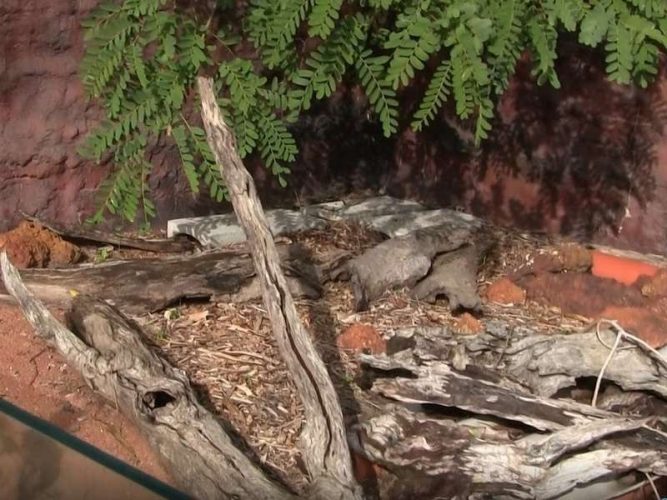
Hay and a sandbox…Perfect
Use hay for a substrate in a bearded dragons house? Not really great as a substrate on its own, but ideal for corners to tuck away in to provide a bit of privacy. Hay makes for a fabulous cover on dig boxes for brumation.
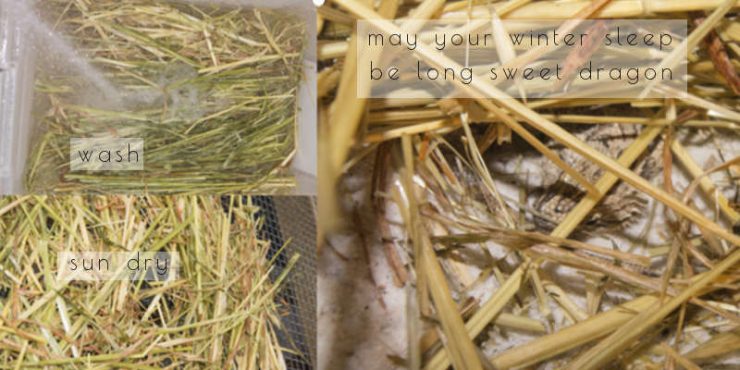
Is it okay to use calcium sand for a bearded dragon?
Calcium sand is not okay for bearded dragons. Calcium sand is not safe for bearded dragons.
With manufacturers claiming that one of the reasons calci or calcium sand is safe is because it contains 100% digestible calcium carbonate just sets off alarm bells for so many experienced keepers. Reading on through the benefits of the calcium sand we see it contains strontium, potassium and magnesium…Let’s not confuse this as a dietary supplement; it’s a substrate not a food.
Calcium sand is not suitable to be ingested and does not aid in digestion. If calcium sand were used as a dietary supplement source, then you will never know how much it is consuming and when to add more to the diet without going to toxic levels. Since a substrate is not suitable to add to the diet supplementation, it is irrelevant.
Calcium carbonate is a calcium supplement used in diets, it is not intended to be applied to the skin. It is drying to the skin and has been accused of causing changes in the colour of skin, eye irritation and impaction amongst various other things.
Apart from a food additive and dietary calcium source, calcium carbonate is also used as a whitening agent and antacids (made to neutralize acid required for digestion in normal circumstances). Under normal circumstances stomach acid should not be neutralised.
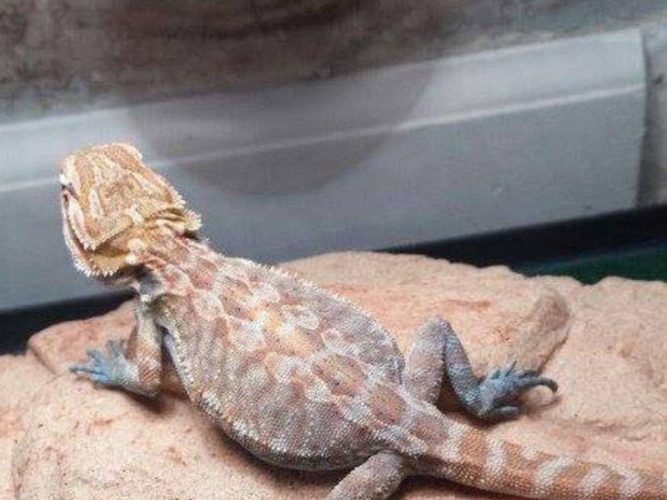
Is calcium sand for bearded dragons safe?
- Prolonged contact with concentrated solutions has a drying effect on the skin and likely cause your bearded dragon shedding issues.
- Dyed sand will change the color of bearded dragons skin.
- If too much is ingested then the risk of impaction is significantly increased.
- Too much calcium causes constipation.
- Risk of overdosing on minerals, particularly calcium if it were ingested with any frequency or volume. No substrate should be used to add calcium or any other nutrients to a diet. Since the quantity ingested cannot be known or controlled, calcium sand should not be used.
Walnut sand and Corn Cob
Both Walnut sand and Corn Cob Litter are dangerous. Both:
- Present ideal conditions for pathogens, particularly bacteria and fungus which will thrive in it.
- Are associated with impaction.
- Are sharp and abrasive.

Walnut sand is not a good substrate for bearded dragons and corn cob litter is also a hazard.
Many experts strongly advise against using corncob bedding due to the risk of accidental consumption leading to blockages in the digestive system. Additionally, corncob material tends to absorb moisture, which can dehydrate young animals (O’Rourke & Lertpiriyapong, 2015).
Gravel
Gravel is not a natural substrate on its own, but more combined with sands where it is part of the environment. Fluids will get lost below the gravel surface where pathogens and parasites can breed protected. It is certainly a hazard for being swallowed and some bearded dragons will eat rocks and gravel for reasons yet to be identified. Gravel is not a replacement for other digging substrates, certainly not for laying eggs in.
Gravel can be useful where it is intended for fluids to drain through the gravel and be trapped for collection, such as in a mini waterfall. In this instance the gravel and liquids will be confined.

Leaves and Leaf Litter
Leaf litter can provide for great hiding spots which is likely to be attractive to many bearded dragons, assuming the leaves that are either beneficial for the bearded dragon or at least non toxic.
Issue with leaves includes hiding spots for invertebrate making it almost impossible to catch them. In addition cleaning will be problematic. Although the entire substrate can be replaced daily even if there is a ready source. Regardless it is something best confined rather than used over the entire enclosure.
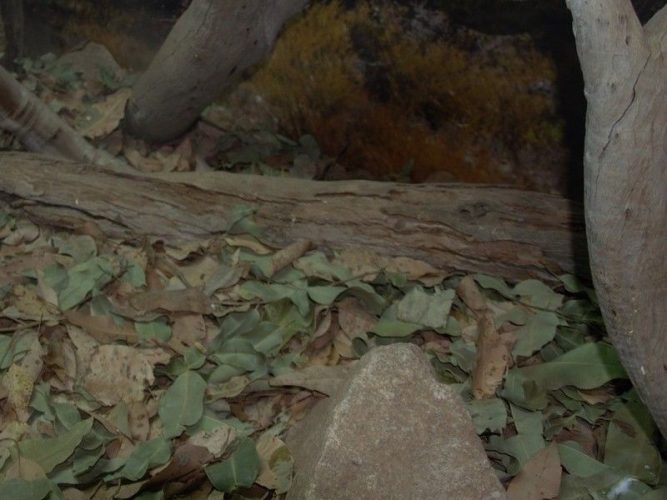
Potting Soil as a Substrate
Potting soil is not a good substrate. Pottings soils have elevated levels of microorganisms.
However, potting soil can be used in plants in the enclosure. Ensure they are free from chemicals including fertilisers.
Sphagnum moss, Vermiculite and Perlite
Sphagnum moss, vermiculite or perlite are not suitable as substrates, however all can be used in plants within the bearded dragons house and all can be used in lay boxes ready for egg laying.
Bark, Wood Chip and Wood Shavings
Bark, wood chip and wood shavings are not good substrates. All the wood based substrates will trap fluids at the bottom of the substrate layer, many woods in this fine form can cause irritations, eaten they are dangerous and fumes can be an issue with many in heated environments. They all provide places for invertebrates to quickly hide and along with moisture will build a great concentration of pathogens.
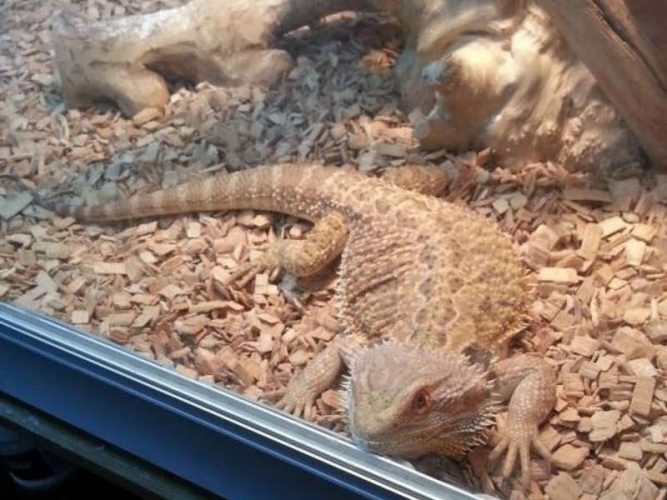
Alfalfa pellets
Alfalfa pellets can be used and shouldn’t be much of a problem if consumed. However, it is highly unsanitary to eat what is defecated on and moisture in the alfalfa pellets will cause mold. There are far better substrates, as already covered, than alfalfa pellets.
Bioactive substrates
Bioactive substrates may help prevent infections through growing bacteria and fungi that are compete with pathogens (Rossi, 2006). Bioactive substrates need oxygen to effectively convert waste which can be achieved through aerating. Pieces of shredded bark, coconut fibre and sphagnum moss mixed in the substrate are all useful additions to provide surfaces for the beneficial bacteria, keep air in the substrate and prevent it from becoming compact.
Bioactive substrates need to be at least 2-3 inches deep (Wilkinson 2016), more is better. They must be kept moist without being wet and must be warm.
To maintain the bioactive substrate, remove the bulk of waste (stools and food) and turn over the area where the waste touched the substrate.
Top 11 Questions to Assess the Best Substrate for Bearded Dragons
Take the guesswork out of which substrate is best. Here are 11 essential questions to assess the best substrate for your bearded dragon:
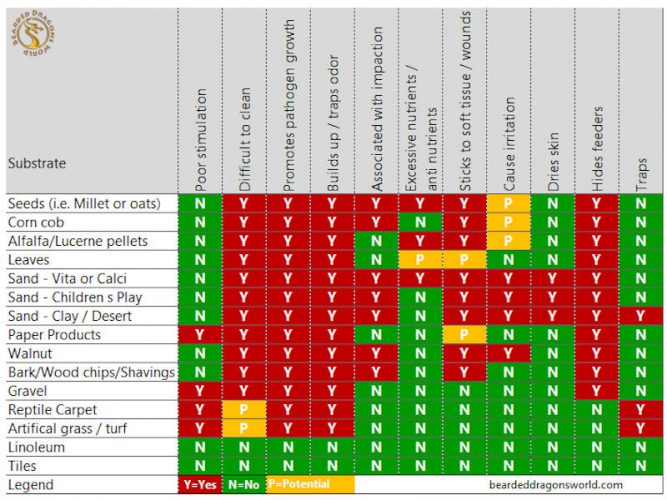
#1. Will the substrate provide good environmental stimulation? Helps keep stress levels down and support good health. Stress lowers immune system effectiveness. Some of the natural behaviours that substrates can stimulate include digging or laying on the surface to absorb heat or soak in water when wet. Note that gravel and pebbles are not suitable as digging substates despite being classed as loose substrates.
#2. Is it easy to keep clean and disinfect? Cleaning being able to wipe stuff off it and disinfect being able to kill some level of pathogens. More on that in the post on best ways to get a super clean bearded dragon house.
#3. Can pathogens build up quickly? Some substrates are better than others at promoting the growth of pathogens such as walnut sand. Mites can hide in the smallest of spots. Pebbles can let fluids pass down to the floor of the housing without being noticed.
#4. Will odours build up / be retained quickly? No one wants a smelly bearded dragon house, reptile carpet is notorious for this.
#5. Has it been associated with impaction?
#6. Could it result in excessive consumption of antinutrients or nutrients? For example, rolled oats can present high levels of phytic acids. Consuming calcium sand can result in unknown levels of calcium.
#7. Will it stick to soft tissue such as a wound or exerted hemipenes?
#8. Can the substrate cause irritation? Irritation might occur if it got in your bearded dragons eyes such as calci sand. Or the substrate may have a lot of small particles that will create a dusty environment and breathing hazard.
#9. Can the substrate dry the skin? Some substrates, such as calci sand, can dry the skin out which may cause issues with hydration and shedding.
#10. Can the substrate hide live feeder insects? Will live food like mealworms, cockroaches or crickets be able to hide in it? Some insects, such as crickets, have been known to cause serious injuries as they the reptiles eat eyelids, mouth area, etc. Even paper can hide feeder insects but they are easier to find in paper than gravel.
#11. Is there any danger of traps? One of the vets who frequented Bearded Dragons World mentioned that he saw a few cases of toenails missing because they were caught in reptile carpet and ripped off. Artificial grass can also become a trap or may even cause choking if threads come loose from the edges and can be swallowed or wrapped around toes. This is easily fixed by heating up the edge to seal it.
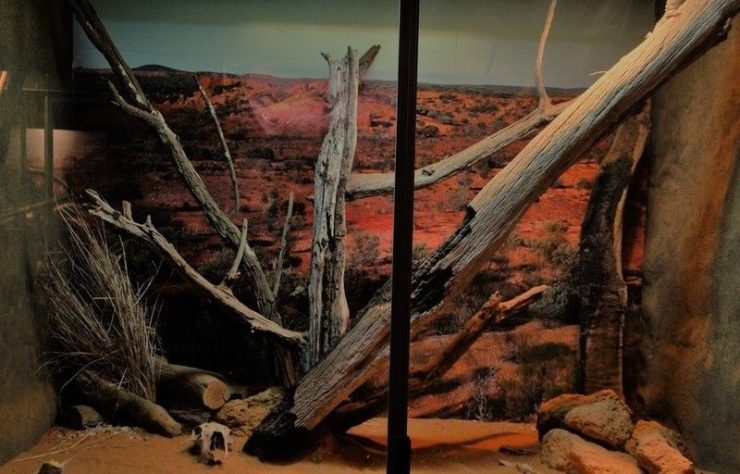
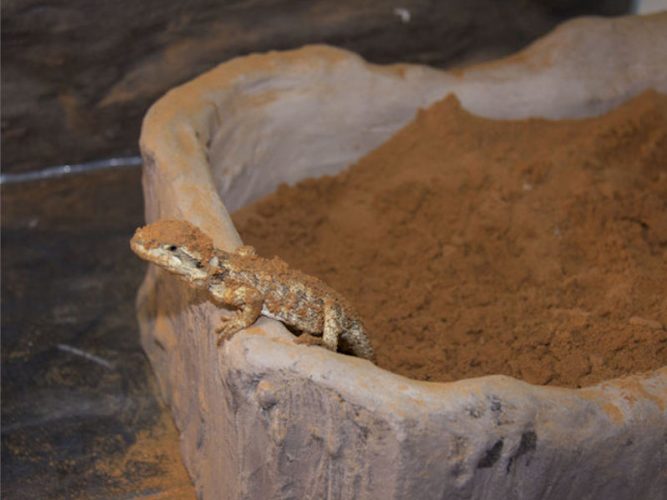
Conclusion
The best substrate for a bearded dragon is a combination of substrates. Combining solid and loose substrates together in an environment will provide enrichment that may encourage natural behaviours.
An example of a good substrate combination is:
- Hard flooring such as tiles
- Sand dig box to dig in for add stimulation
- Hay on top of the dig box to hide in
Encouraging natural behaviours reduces the risks stress and disease.
Solid substrates are easier to clean and disinfect than loose substrates. Loose substrates will typically have to be replaced rather than cleaned.
Solid substrates and accessories will help keep sharp little claws in check without the need to clip them.
Always keep in mind that once you have chosen a substrate you are not stuck. You can change your mind at any time and try something new.
Related Posts
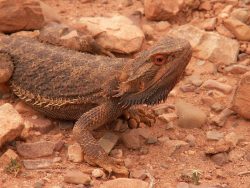
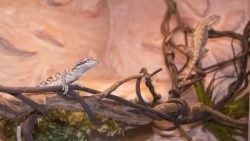
References and Further Reading
- Baines, F. (MRCVS) (2017) Your First Bearded Dragon Care Information.
- O’Rourke, D. P., & Lertpiriyapong, K. (2015). Biology and Diseases of Reptiles. Laboratory Animal Medicine, 967–1013.
- Rossi, J. V. (2006) General husbandry and management. In: Mader DR, editor. Reptile medicine and surgery. St Louis: Saunders. p. 25–41.
- Turner, G. and Valentic, R. (n.d.) Notes on the occurrence and habits of the Downs Bearded Dragon Pogona henrylawsoni (Wells & Wellington, 1985). https://australianreptileimages.com/article-henrilawsoni
- Wilkinson, S. L. (May, 2015) Reptile Wellness Management. Veterinary Clinics of North America: Exotic Animal Practice. Vol 18 (2): 281-304

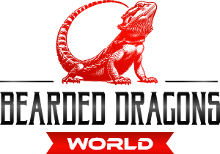
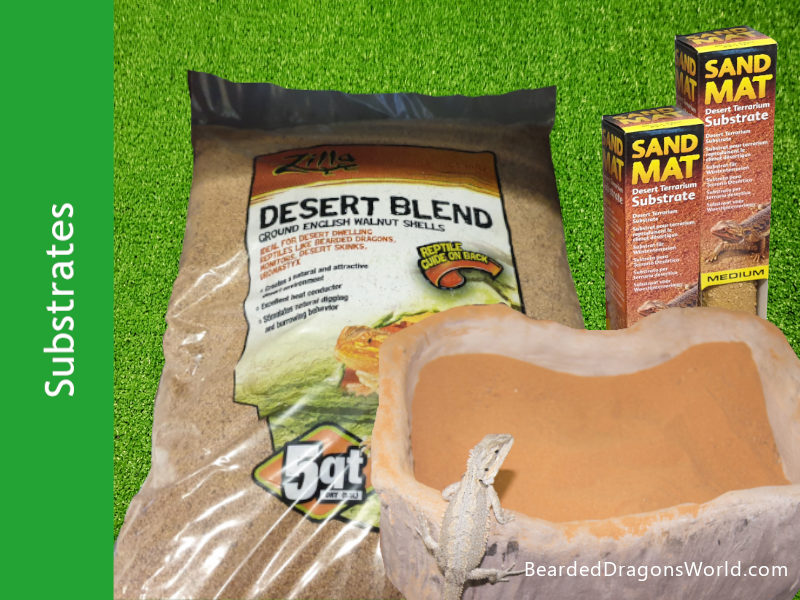
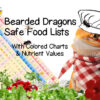
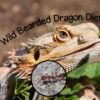


I’d like to know where I can get that dig box Sucru has, pretty cool looking hollowed out tree stump
A sand box can be something as simple as a cat litter tray (not with cat litter of course) or you could buy one for the purpose from a pet shop.
I like the idea of the sand boxes. Walnut sand, cob and all those ridiculously harmful substrates … I get it that manufacturers and pet shops sell anything regardless, they are a business to make money. But isn’t it dreadful that they are being bought!